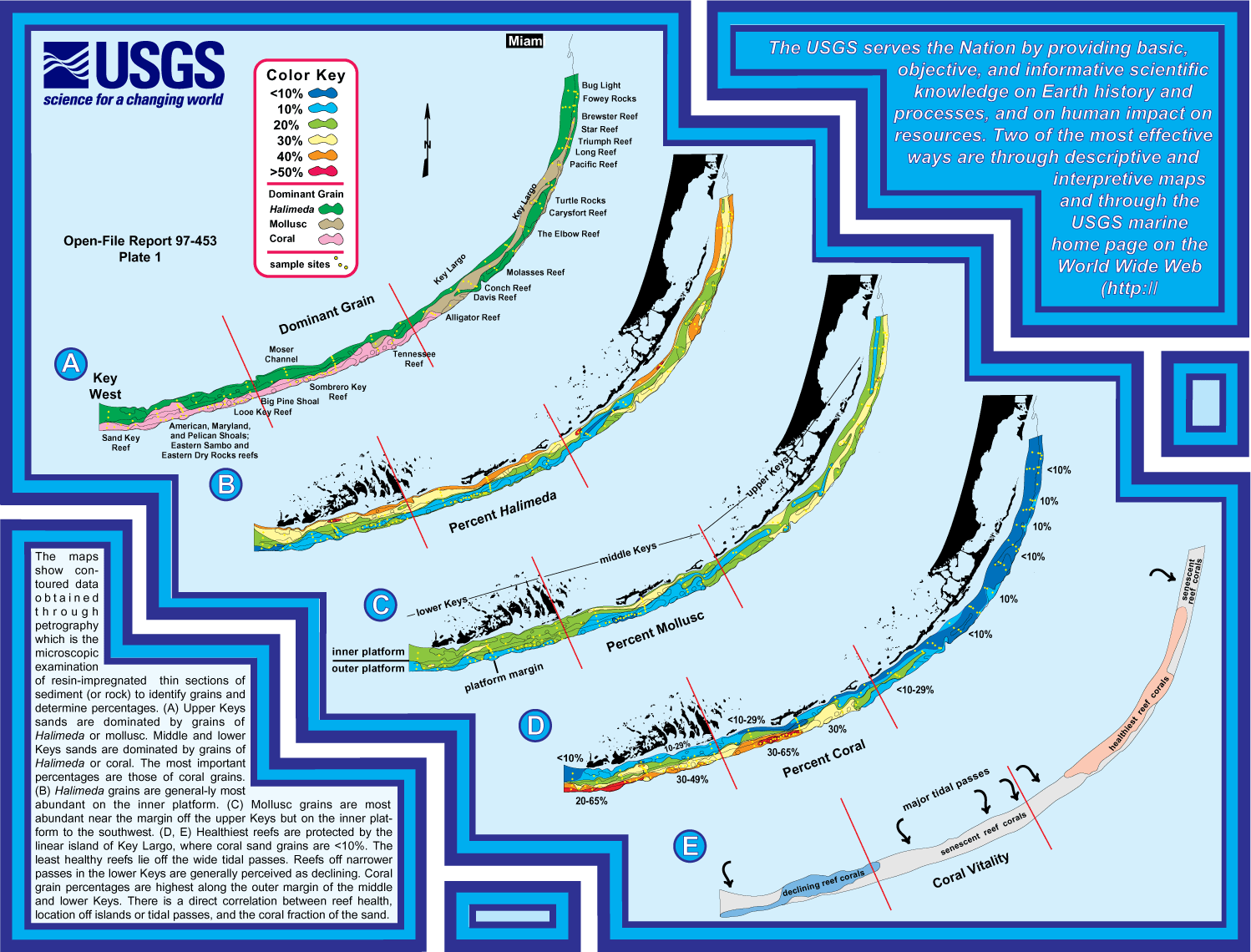FISC - St. Petersburg
Sedimentary Grains in 1989 map: Thin-section analyses of surface sediments collected shelf-wide in 1989 indicate three types of skeletal grains dominate sands off the Florida Keys: Halimeda, coral, and mollusc. (A) In 1989, Halimeda grains were dominant along the entire inner shelf, mollusc grains were dominant along portions of the outer shelf off the upper Keys, and coral grains were dominant along the outer shelf off the middle and lower Keys. (B) The highest proportions of Halimeda grains were found in inner-shelf sediments off the northern upper Keys and the lower Keys. (C) Mollusc grains generally composed <10% of skeletal grains off the middle Keys but were ~20% elsewhere. (D) Coral-grain counts were highest off the middle and lower Keys and correlated with reef decline as observed in the field (E). Diagonal red lines show general island divisions into the upper, middle, and lower Keys. Data from Lidz and Hallock (2000).
Halimeda grains dominate The Quicksands (Hudson, 1985). Sedimentary data for The Quicksands were not included in the map because they are not contiguous with the keys data. Sediment sampling and analyses have not been conducted between Key West and the Marquesas Keys. Halimeda- and coral-grain percentages in The Quicksands are contoured in Shinn et al. (1990).
|
Can't see the printable PDF version? Get the free Adobe Acrobat® Reader. |
